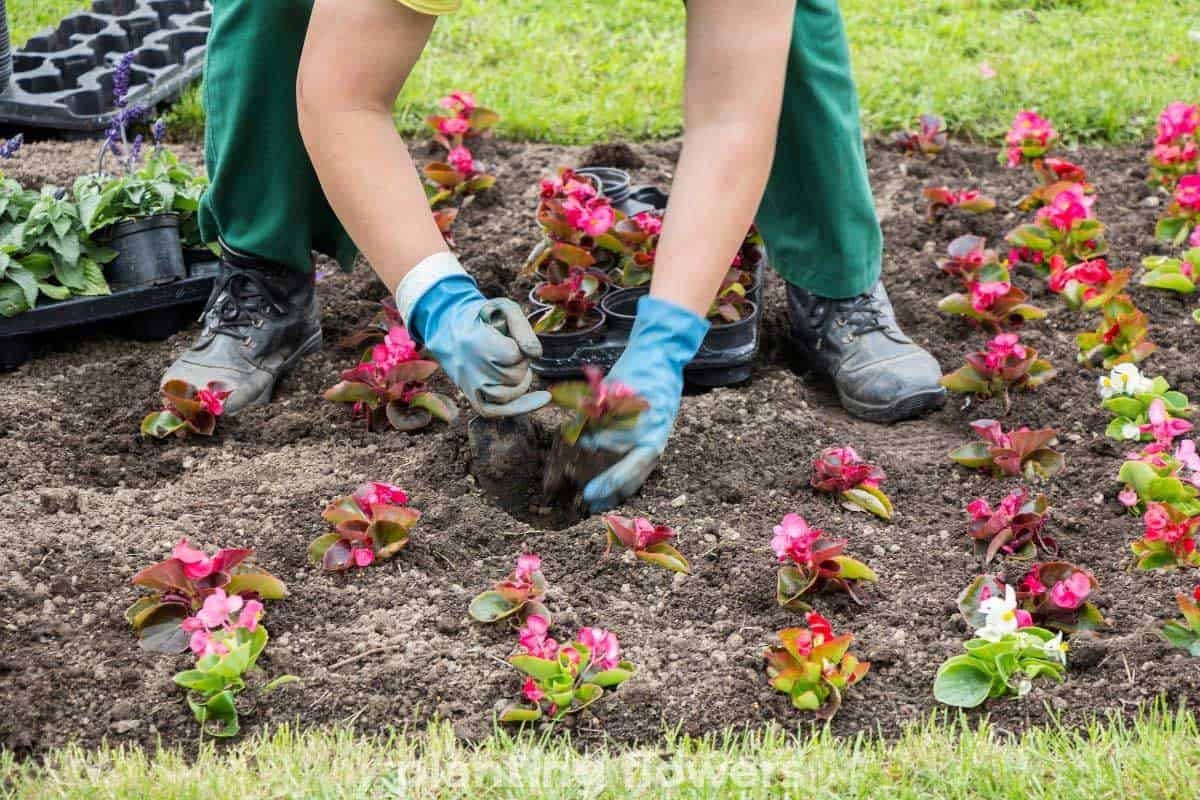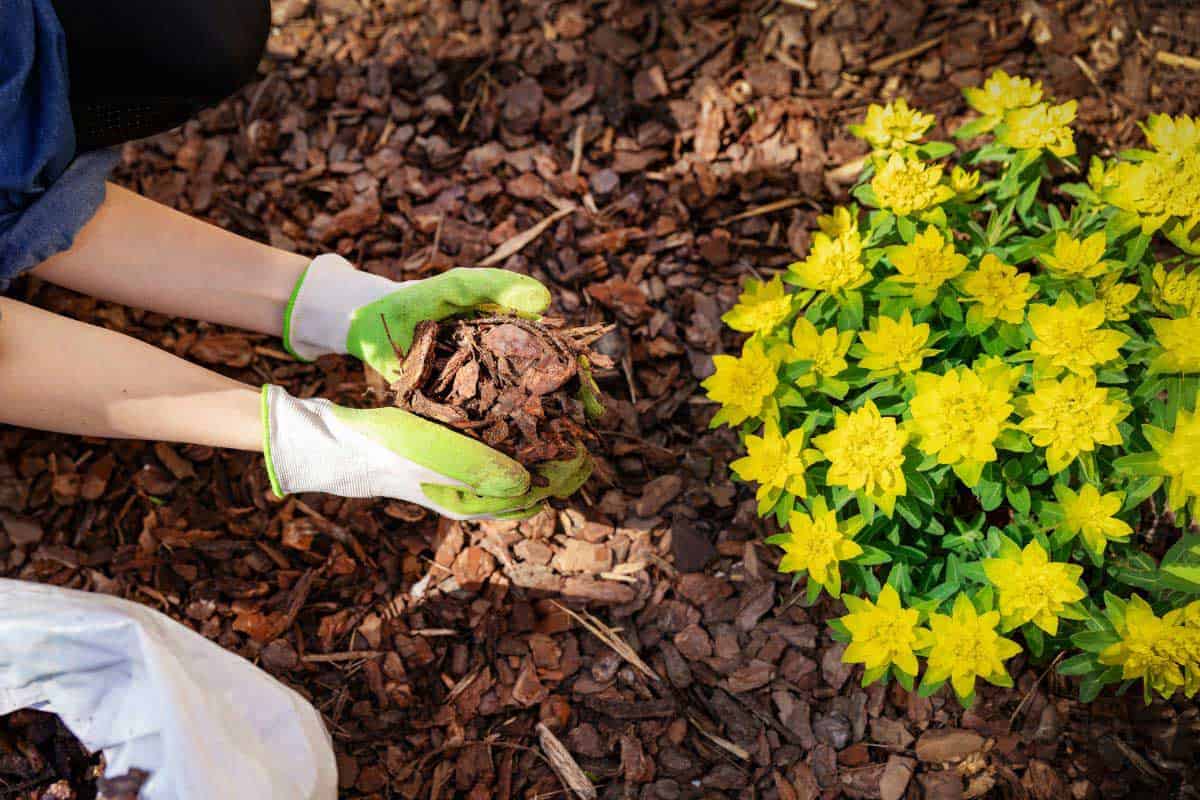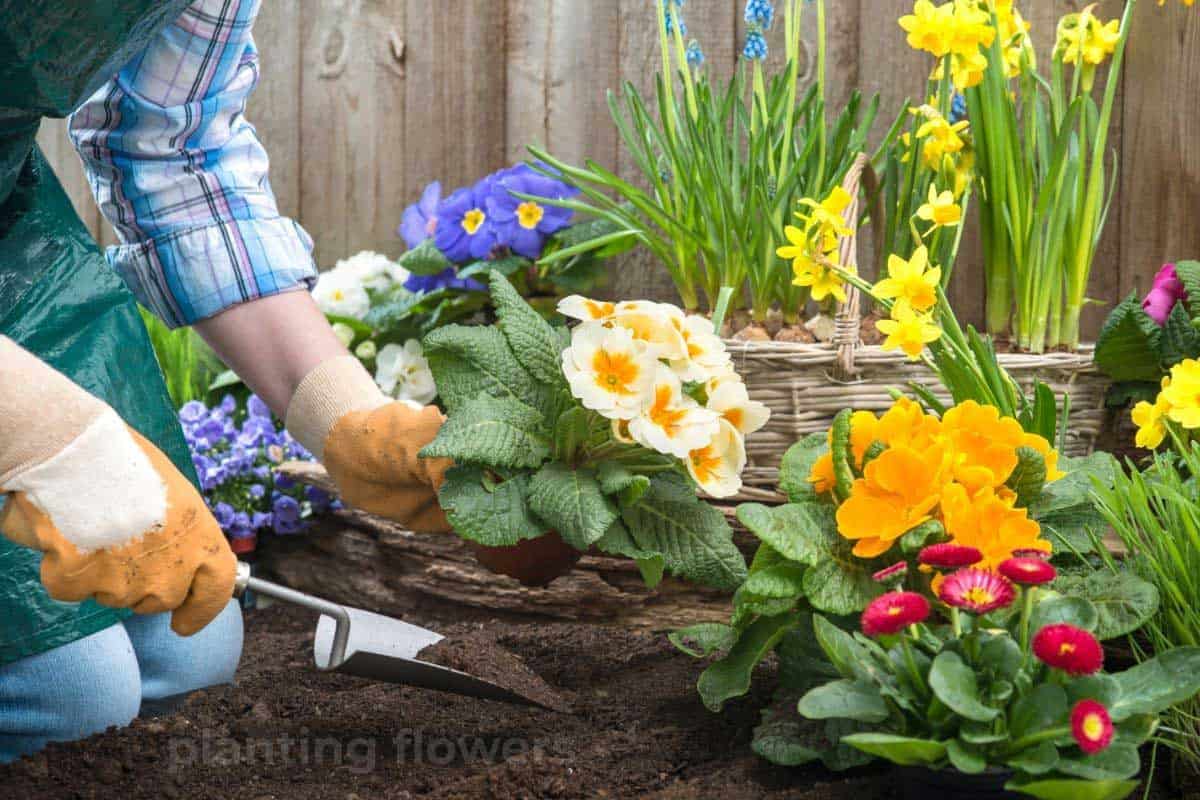This page may contain affiliate links. If you click and buy, we might get a small commission at no cost to you.
Planting flowers is one of the most satisfying ways to add color and life to your outdoor space. But whether you’re filling a garden bed, lining a walkway, or arranging containers on a porch, there’s one detail that can make or break your results: how far apart to plant flowers.
Spacing might seem like a minor consideration, but it plays a big role in how well your flowers grow, how full your garden looks, and how easy it is to maintain over time. In this guide, we’ll give you quick spacing answers, explain why proper distance matters, and walk you through how to space your flowers the right way from the start.
How Far Apart Should You Plant Flowers?
The quick answer:
- Small flowers like pansies, lobelia, or dwarf marigolds should be spaced 6 to 10 inches apart.
- Medium flowers such as petunias, impatiens, or coreopsis grow best with 12 to 18 inches of space.
- Large flowers including dahlias, tall zinnias, peonies, and sunflowers generally need 18 to 36 inches between plants.
These general ranges help give each plant enough room to grow without competing for sunlight, water, or nutrients. Proper spacing also improves air circulation around the plants, which helps reduce the risk of common flower diseases like mildew or rot. If you’re planting in containers or hanging baskets, you can usually space flowers a little closer together, but you’ll still want to avoid overcrowding, especially near the root zone.
If you want more detailed spacing guidelines for specific flowers, or you’re unsure how to measure and lay out your garden, keep reading. We’ll walk through how to read plant labels, when to break the rules, and include a helpful spacing chart for quick reference.
Why Flower Spacing Matters
Spacing is one of those things that beginner gardeners often overlook in the excitement of getting flowers in the ground—but it can have a lasting impact on how well your garden performs. Giving flowers the right amount of room allows roots to expand naturally and prevents them from having to compete too hard for water or nutrients. This leads to stronger stems, more consistent blooms, and better overall plant health.

Just as important, correct spacing improves airflow between plants, which helps keep moisture from lingering on leaves. That’s key in preventing fungal issues like powdery mildew or rust, especially in areas with humid weather or frequent rainfall. When plants are too close together, their leaves often touch or overlap, creating small pockets of trapped moisture—perfect conditions for disease to spread.
From an aesthetic perspective, spacing affects how “full” your garden looks. If flowers are spaced too far apart, the garden may feel patchy or sparse. But if they’re packed too tightly, you’ll likely end up with tangled, stressed plants that are more difficult to maintain. Good spacing strikes the balance between a lush look and healthy growth.
General Flower Spacing Guide
| Flower Size / Type | Spacing Range | Examples |
|---|---|---|
| Small Annuals | 6 to 10 inches apart | Lobelia, pansies, alyssum, marigolds (dwarf) |
| Medium Annuals | 12 to 18 inches apart | Petunias, cosmos, snapdragons, calendula |
| Large Annuals | 18 to 24 inches apart | Dahlias, sunflowers, zinnias |
| Small Perennials | 8 to 12 inches apart | Coral bells, dianthus, black-eyed Susans (dwarf) |
| Medium Perennials | 12 to 18 inches apart | Coneflowers, daylilies, coreopsis |
| Large Perennials | 18 to 36 inches apart | Peonies, bee balm, Russian sage, tall phlox |
This table provides general spacing ranges based on the mature size of each plant. Within each range, you may want to lean toward tighter spacing for mass plantings or containers, and wider spacing when mixing flowers with shrubs or ornamental grasses. Always check individual plant tags when possible, as spacing can vary between cultivars.
How to Space Flowers When Planting (7 Easy Steps)

1. Choose Your Location
Start by selecting a spot that meets the sunlight and soil needs of the flowers you plan to grow. Most flowering plants need full sun—at least six hours per day—but some, like impatiens or astilbe, do better in partial shade. Assess the area for drainage, space, and nearby plants that could compete for resources. Planning ahead will help prevent spacing headaches later.
2. Prepare the Soil
Once you’ve picked your location, it’s time to prepare the ground. Loosen the soil using a garden fork or tiller, removing rocks, roots, and debris along the way. If your soil is heavy clay or sandy, mix in compost or organic matter to improve structure and drainage. Smooth the surface with a rake so you can measure spacing evenly and plant with ease.
3. Check Spacing Requirements
Refer to the plant tags or seed packets for spacing recommendations, and compare them to the general guidelines listed earlier in this article. If you’re planting multiple flower varieties, sort them into groups by spacing needs. It helps to sketch out your layout on paper or use markers in the bed so you can visualize the spacing before you begin planting.
4. Lay Out the Plants Before Digging
Before putting anything in the ground, arrange your plants on the soil surface where they’ll go. This step is especially helpful if you’re working in a curved bed or trying to create a specific pattern. Use a measuring tape or even your hands (about 4 inches wide per palm) to eyeball spacing. Adjust as needed until everything looks balanced and evenly spaced.
5. Dig Holes at the Correct Distance
Dig each planting hole to the depth of the plant’s container or root ball, keeping the recommended distance between each hole. This ensures that once planted, your flowers will have the exact spacing they need from day one. If planting from seed, follow the thinning instructions carefully after germination to avoid overcrowding.
6. Plant and Backfill
Place each flower into its hole and gently backfill with soil, pressing lightly to eliminate air pockets. As you plant, double-check that the spacing is still accurate. It’s easy to accidentally nudge plants closer as you go, especially when working with soft soil or curved layouts. Once everything is in, water thoroughly to help the soil settle.
7. Add Mulch and Monitor Growth
Applying a thin layer of mulch between your flowers helps retain moisture, suppress weeds, and protect spacing by discouraging weeds from filling in empty space. As your plants grow, monitor their size and shape. If certain flowers begin to crowd their neighbors, you may need to trim, transplant, or thin them out to maintain healthy spacing.

Final Thoughts on Flower Spacing
Proper flower spacing is one of the easiest ways to set your garden up for success. It helps your plants grow stronger, keeps air circulating to prevent disease, and creates a cleaner, more professional-looking garden overall. Whether you’re working with annuals, perennials, or a mix of both, giving each flower enough room to grow will result in healthier plants, bigger blooms, and less maintenance down the line.
When in doubt, start with the spacing guidelines provided here or on your plant tag. Use those measurements as a baseline, then adjust based on your layout, container size, and the mature size of the plants you’ve chosen. A little planning up front makes a big difference once your garden fills in and starts to bloom.



